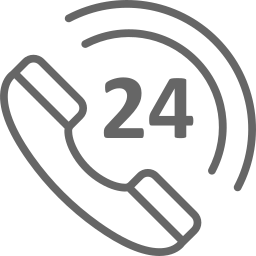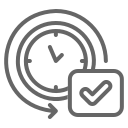The database is defined as the extraction of interrelated data used with the purpose of retrieving, inserting, and deleting the data in an efficient manner. It also helps in organising the data in the form of a schema, reports, tables, views, and the like. For instance, the database of the university organizes the data of the staff, faculty, students, and the admin. It makes retrieval, insertion, and deletion of the data easier for the users using the database for specific purposes.
The Database Management System (DBMS) is basically referred to as a software system designed in order to describe, direct, retrieve, and administer the data kept in the database system. The database management system helps in manipulating the data, data format, field names, structure of the file, and structure of the record and is also used in defining the standards and regulations to validate and control the data. A database management system assists the users who frame programs in the maintenance of the data. This is for the reason that it serves the users with an interface to carry out different forms of operations such as data storing, database creation, data update, table creation in the database, and so on. Apart from the DBMS package, SQL which is a fourth-generation query language is utilized in order to interact with the database system. Besides, it maintains data consistency and develops a protective shield by protecting and securing the database of a certain business or operation. Some of the database management systems are SQL Server, MySQL, FoxPro, dBASE, Oracle, etc.
Our DBMS assignment help experts are well-versed in carrying out the following items while writing DBMS assignments:
Our DBMS assignment help experts have been using DBMS for years and are familiar with the advantages and disadvantages of DBMS systems. Some of them are as follows:
|
|
There are various types of database management system such as network database, flat database, hierarchical database, object-oriented database, relational database, graph database, document database, ER model database, and NoSQL database. Our DBMS assignment help experts are familiar with all of them and can solve any DBMS assignment within a few hours.
A network database is well recognized as an efficient database, primarily utilized on large digital processors which basically require more networks and connections established between various data types. The flat database is considered as encountering more errors because of repetitive data nature and involves the data that is classified in a particular record with the rigid amount of fields. On the other hand, in the hierarchical database, the data is classified in a tree-based relationship but it gets a complicated network in case the one-to-many relationships get broken.
Our DBMS assignment help experts, who are familiar with object-oriented databases, say that the data is categorized with a resemblance to the object-oriented coding models and concepts. The key benefit of this type of database is the capability of mixing and matching the reusable objects which aid in enhancing the level of incredible multimedia skills. In contrast, it is comparatively more expensive in order to develop and convert data from the object-oriented database systems. The graph database utilizes a graphic structure for queries such as semantic queries and stores the data in the shape of lines, edges, properties, and nodes. It is also known as NoSQL database. Furthermore, the document database or Document DB classifies and stores the data in the shape of documents where every document displays the data and the relationship between data attributes and other elements of the data. It categorizes the data in the structure of a "˜key value'. Examples include MapR, Hypertable, Hadoop/Hbase, Azure DocumentDB, IBM Informix, Amazon SimpleDB, Cloudera, etc.
The Entity-Relationship (ER) model database represents the data by implementing each row of a table holding one type of entity where each table holds a unique type of an attribute reflecting the characteristics that are exclusive to it only. The NoSQL databases are those types of databases that don't utilize SQL as its principal language for accessing the data. Most common forms of NoSQL databases are document database, graph database, network database, and object database. Popular NoSQL databases are Neo4j, SAP HANA, Elasticsearch, MongoDB, CouchBase, Amazon DocumentDB, CouchDB, Couchbase Server, ArangoDB, and Cosmos DB.
The NoSQL database is classified into five major categories as follows:
DBMS assignments can become complex if you do not avail help for writing them on time. And if you need urgent help for your DBMS assignment, contact us today. We provide professional assignment writing services and value-added services at pocket-friendly rates. Do avail our DBMS assignment help today and you'll see yourself scoring excellent grades in the DBMS assignments! To know more about our services, you may browse our website, Online Assignment Expert, or simply chat with our customer care team.

Get 24x7 instant assistance whenever you need.

Get affordable prices for your every assignment.

Assure you to deliver the assignment before the deadline

Get Plagiarism and AI content free Assignment

Get direct communication with experts immediately.
Secure Your Assignments
Just $10
Pay the rest on delivery*

It's Time To Find The Right Expert to Prepare Your Assignment!
Do not let assignment submission deadlines stress you out. Explore our professional assignment writing services with competitive rates today!
Secure Your Assignment!